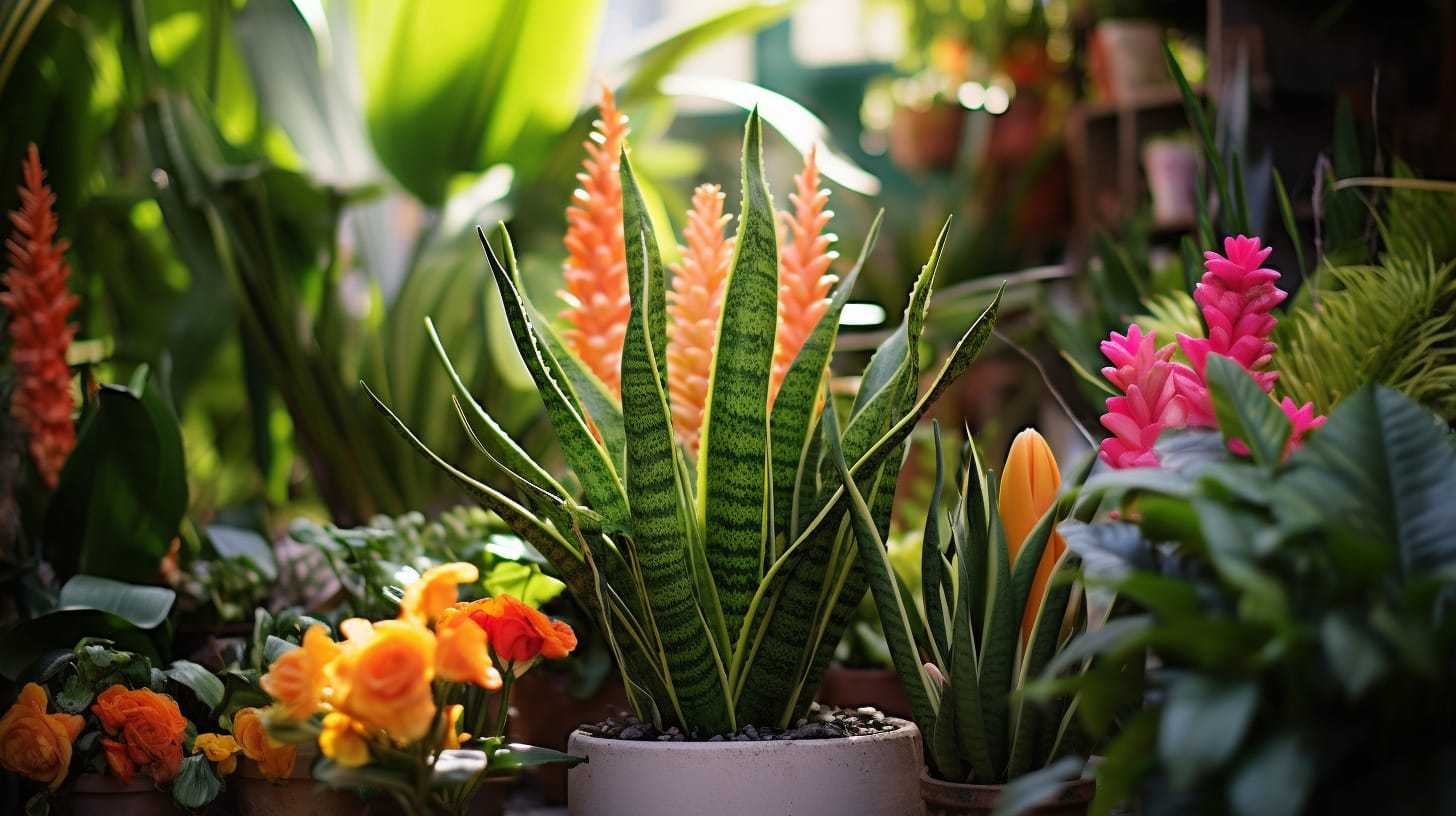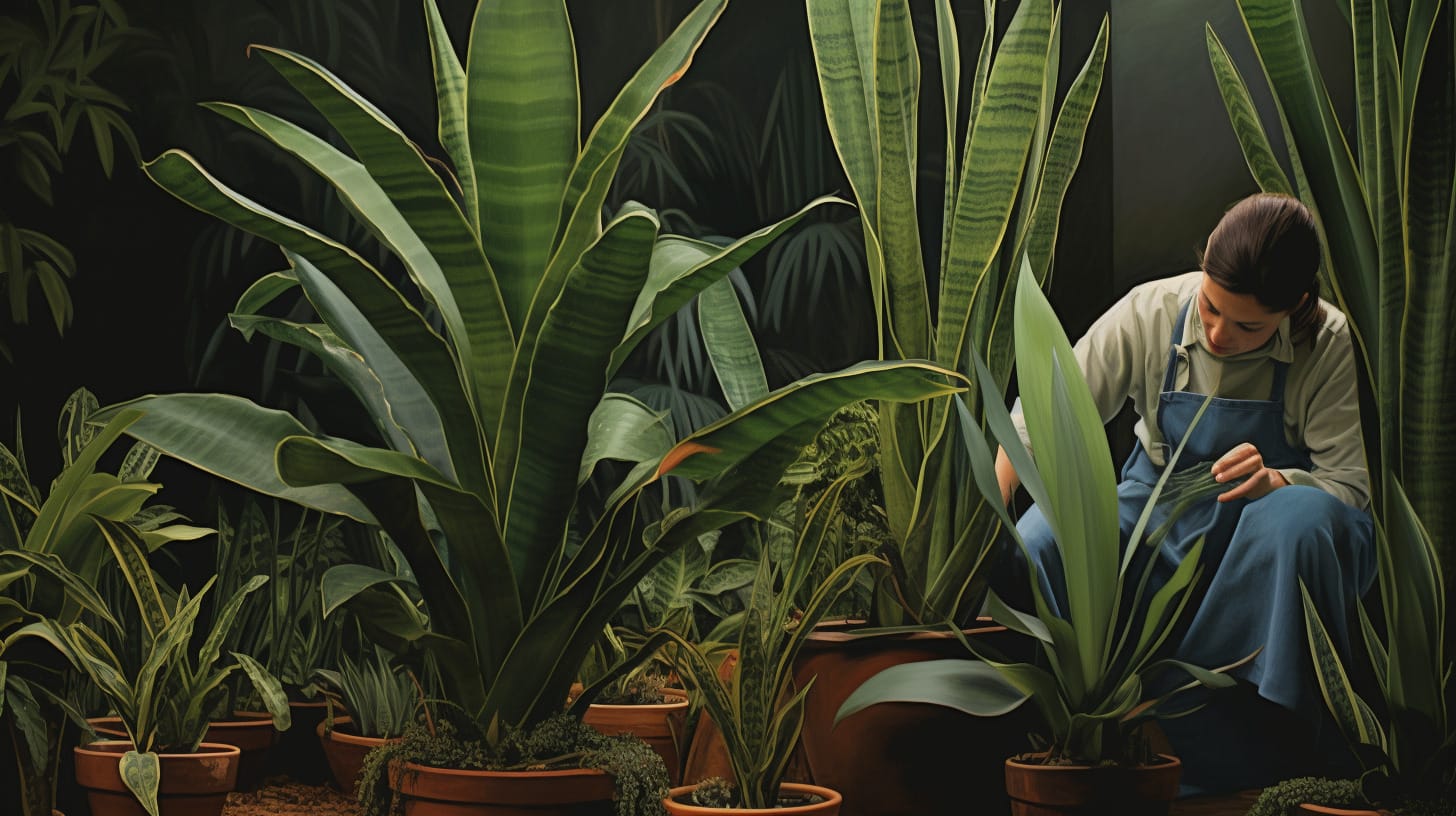The durable and fashionable snake plant, a prized tropical indoor gem, often arouses curiosity. Might you be pondering, is it possible for a snake plant to flourish when grown outdoors?
The answer is a resounding yes. Snake plants can flourish outdoors, given the right conditions. Stay with us as we delve into the outdoor world of the snake plant – a journey filled with gratifying triumphs and enlightening surprises.
Key Points
- Snake plants adapt well outdoors in places that meet their light and temperature conditions. They thrive best outdoors in USDA Zones 8 to 11, where temperatures average between 55 and 90 degrees Fahrenheit.
- Snake plants excel in bright but shaded light conditions. Excessive exposure to direct sunlight can be damaging.
- Proper drainage is vital. Overwatering can cause root rot, so water your snake plant only when the top inch of the soil is dry.
- Transitioning a snake plant from indoors to outdoors should be carried out gradually. Start by placing it in a partially shaded spot and slowly increasing its sunlight exposure over a week or two.
Understanding Snake Plants
Originating from West Africa, snake plants make excellent indoor and outdoor houseplants, boasting strong, tall, variegated leaves. Naturally, they bask in abundant luminosity and year-round balmy weather. It copes brilliantly with low light and water conditions as a houseplant, contributing to its mass appeal for indoor cultivation.
Though the snake plant is resilient, optimal conditions for its growth are a blend of bright (but not too intense) light, ample water, and warm temperatures above 50 degrees Fahrenheit.
Can a Snake Plant Live Outside?
Yes, a snake plant can grow outside, but the suitability of your location is important. These tropical plants require an average temperature of 55 degrees Fahrenheit. They thrive outdoors in the USDA Zones 8 through 11. Snake plants can survive temperatures between 55 to 90 degrees Fahrenheit.
If your region experiences temperatures colder than this, caution is required. Snake plants do not tolerate cold temperatures. Prolonged exposure to anything below 50 degrees Fahrenheit could be detrimental to your plant’s health. Choose a suitable spot and remain alert to weather changes to keep your snake plant thriving.
Ideal Conditions for Growing Snake Plants Outdoors

Snake plants exhibit healthy growth outdoors when certain conditions are met. Here are several critical areas worth focusing on.
Lighting Conditions
Although sunlight encourages growth in snake plants, they can suffer if exposed to excessive direct sunlight. Aim for a balance in exposure – a patchy shaded location or indirect sunlight is ideal. Protect plants from scorching sunlight that could dry up and burn their leaves.
Water Needs
Snake plants require moderate watering outdoors because the soil dries out quickly due to the sun and wind. Overwatering can lead to root rot; hence, plants need well-drained soil and consistent watering checks.
Soil Type
Draining soil matters more than soil type for snake plants. As long as the soil drains well, snake plants will grow well. However, soil types rich in nutrients, designed specifically for snake plants, cacti, or succulent plants, provide optimal growth conditions.
Common Mistakes to Avoid When Cultivating Snake Plants Outside

Growing snake plants outdoors involves several potential pitfalls, and some common missteps include overwatering, ignoring signs of pest attack, and exposure to intense cold weather. Avoiding these will increase your snake plant’s chances of thriving outdoors.
Overwatering
Overwatering can cause root rot and create a breeding ground for fungal issues. These plants are drought-resistant and are happier when watered only when the soil is dry to the touch.
Ignoring Pest Attacks
Pests like spider mites and scale insects can quickly diminish the health of your snake plant. Regular inspections and prompt interventions using organic pest control methods can help keep your plant healthy.
Exposure to Extremely Cold Weather
Snake plants are sensitive to extreme cold weather. Constant exposure to temperatures below 50 degrees Fahrenheit is harmful to them. If you live in an area with cold winters or a high frost frequency, moving your snake plant indoors during these times is best.
Transitioning Indoor Snake Plants Outdoor
Transition snake plants outside gradually to prevent shock.
- Place the plant in a shady location upon the first move.
- Gradually increase light exposure over one to two weeks.
- Monitor temperature changes. Ensure that plants do not remain outside when temperatures drop below 50 °F.
- If your locale experiences intense heat, give the plant shade during the day’s peak heat.
- Take note of changes in humidity levels. Unlike indoors, outdoor environments can be more humid, affecting watering needs.
- Before moving your plant outside, check the foliage and soil for signs of pests. Treat any discovered infestations before moving the plant outdoors.
Benefits of Growing Snake Plants Outdoors
Growing your snake plant outdoors has numerous benefits, including its air purification qualities. In addition, they also reduce allergens such as pollen and dust mites, benefiting individuals with allergies or respiratory conditions.
Growing snake plants outdoors can provide beauty and health benefits. So, if you’re looking for a hardy and versatile plant, consider a snake plant for your future outdoor gardening endeavors.
Excited about growing your snake plant outdoors? Wait until you discover the stunning possibilities of creating a snake plant hedge!
Conclusion
Indeed, snake plants can survive outdoors under the right conditions. Proper sunlight exposure, correct watering regimen, and protection from freezing weather will help your snake plant do well outdoors. Not only will they beautify your garden, but they also purify the air and reduce allergens. So try something new and let your snake plant enjoy the great outdoors!
FAQs
1. Can snake plants live outside?
Yes, snake plants can thrive outdoors if proper plant care and suitable conditions are provided.
2. How do I grow a snake plant outdoors?
Choose a shady location that gets indirect sunlight, and ensure the plant is in a pot with adequate drainage.
3. Do I need to move my outdoor snake plant indoors during harsh weather conditions?
Yes, as temperatures below 50 °F can damage the plant.
4. Are there special considerations for watering an outdoor snake plant?
Yes, snake plants are drought-tolerant and cannot tolerate waterlogging. Only water the plant when the soil is not moist.
5. What kind of soil does an outdoor snake plant require?
Well-drained soil is essential. Specialized snake plants, cacti, or succulent soil are optimal, but regular soil will suffice.
6. How often should I check on my outdoor snake plant?
Check your plant every few days, especially during spring when growth speeds up.







